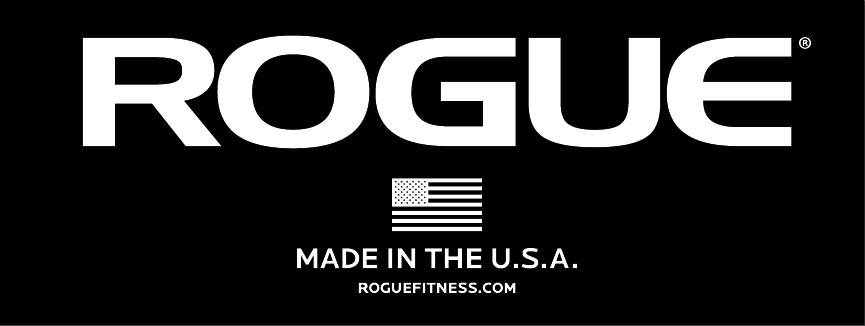More Does Not Equal Better
Grind (verb): reduce (something) to small particles or powder by crushing it; hard dull work
“The Grind”: buzzwords used by sports coaches and strength coaches alike to describe the hard work – heavy weights, sprint-jogging, excessive volumes, that take place during the offseason (or all year), in order to gain an advantage over their opponents at game time.
We have been led to believe more work and mental anguish will make our players resilient and tough when its time to play a game, when all the constant hammering achieves in the end result is a team that is “in-shape”, half-broken, half-speed, half-potential, and cruising for a full-blown injury. When it comes to training, it’s better to be fully recovered and 80% in shape than the other way around; health must be the main priority for long-term development.
Every team will go through periods of increased soreness and tiredness in their off-season. Don’t stay there forever – the body can only resist the increased demand for so long without rest before it bypasses positive adaptation and enters a phase of physiological exhaustion: overtraining. This is categorized by a decrease in force output, decreased quality and quantity of sleep, increased soreness, irritability, mental fatigue, as well as an increased chance of injury caused by the factors above. Another chief concern is the effect of an overtrained state on the adrenal system by chronically elevated cortisol levels. Acute increases in cortisol in response to exercise stress are normal; cortisol is a “mobilization” hormone responsible for increasing sympathetic activity (heart rate) and facilitating the release of glucose from the cell for energy. Overtrained and chronically fatigued athletes have higher resting cortisol levels and as a result, may struggle to relax, sleep, or even maintain body weight due to increased fuel mobility.
The key to long-term athletic development is to spend most of your training year taking a “pull the floor” approach, or protect against the downside -don’t lose strength or power. In our gym, “big moves” – compound lifts, are performed for most of the year in the 60-75% loading range to protect against the downside of strength/power loss, or see tiny, gradual increases in them.
“But the TEXTBOOK says > 80% max for strength development”.
The plural of anecdote is evidence, and concerning our 40+ athletes, lifting in this intensity range has produced improvements in strength and has allowed them to move through a full range of motion with excellent technique, and establish proper motor patterns. 75% is the “sweet spot” where important athletic qualities seem to mesh: strength, power, hypertrophy. Hypertrophy can be attained in any repetition range, given max intent; strength and power are dependent on velocity. Total volume aside (we average 3 reps/set), 75% training max in presses and squats is fast enough for adequate bar velocity (maintenance or small gains in power over time), and heavy enough to maintain or make small gains in strength.
Every once in a while, it’s okay to take a “push the ceiling” approach, or exceed the usual lifting intensity for a pre-determined amount of time – a microcycle (typically one training week), or a training block (typically 4 weeks), to maximally exploit a particular motor quality or target – in this case, strength. Where the “pull the floor” approach is mainly protective/preservative/defensive, a “push the ceiling” approach is an ATTACK on the primary motor quality. We use more weight, take more risks, and pursue aggressively our training target while almost wholely ignoring (or minimally exploiting) other targets (speed, power).
For example, if your intent is to improve vertical jump performance in a short time, most of it should be spent jumping and moving light weights quickly, performing plyometrics, etc. Poor use of short time would be to exploit strength, endurance, speed, AND jumping power, all within the same training block; since these are all individual motor qualities, the training of one detracts from another.
During a training cycle, no more than two motor qualities should be trained at a time. Exploiting ONE motor quality will lead to the greatest increase in it at the slight expense of the others, while two motor qualities lead to moderate increases in both; training additional qualities leads to marginal or no significant gains in any of them.
So, when taking a long-term athletic development approach, a normal training cycle spends a little time in the strength camp, and a little time in the power camp in order to bolster both. Over weeks and months, small victories add up; a ~2% increase every month for a freshman that has an initial squat of 225lb equals a cumulative 24% increase to 280lb by sophomore year.
Do that for four years of high school – the gains will slow down as training age and experience climb, but if all this athlete did was make 1-2% increases in relative intensity every month of their high school career, they’d be squatting near 100% more by the time they reach year one of college. Your athletes will be considerably less banged up and injured when they report to training camp in college. Again, better to be 100% recovered than 100% in shape; you can’t play hurt.
Below is a hypothetical squat max progression spanning four years:
Year One: 225 + 2% gain*12 months = 280
Year Two: 280 + 2% gain *12 months = 350
Year Three: 350 + 1% gain*12 months = 390
Year Four: 390 + 1% gain*12 months = 435
Four-year net progress: 210 lb, 93% increase
While hypothetical, the above progression is by no means abnormal, and is conservative in my estimation. Hold your athletes to a standard and advise them to “take the small victory”; take the 5lb PR on squat and know you can complete the lift, instead of attempting the more aggressive jump, risking a missed lift, and a mental/psychological gut-punch that may derail the rest of the training session. Worse in the long run, if the athlete is constantly being aggressive in their weight jumps and taking unnecessary risks, while it may pay off some of the time, it is more likely to lead to injury. An injury is not a death sentence, but while the one athlete is nursing an ACL because they were “the hare”, another is taking their sweet time, taking small victories, being “the tortoise”.
Your athlete’s perceived effort in the weight room should be 100% regardless of the motor qualities being stressed or the load on the bar. Coaches will get anxious without putting their kids through the meat grinder due to the perception that no pain = no gain. When it’s week two of training camp, they will wonder why half the roster is out with non-contact injuries, or why everyone not injured is so tired and sore.
Athletes receive the platitudinous “We need to take better care of our bodies”, remarks from coaches while they scratch their heads for answers, failing to consider that all the “grinding” they have inflicted might not be an offender, but the culprit holding the team back from being as successful as they otherwise could.
We should desire to give kids LONG playing careers, a love for not just their sport, but for the weight room. To do this correctly, we must re-think “The Grind”. We need not be so aggressive with our high school freshman; maybe it is better they always “pull the floor”, while upperclassmen, particularly high school seniors, spend relatively more time “pushing the ceiling” to squeeze a little more juice out of the motor quality in question.
In any case, I encourage coaches, parents, and athletes to consider the dictionary definition of “grind” – and coaches especially, be honest enough to adhere to it. In doing so, you’ll be faced with a choice: crush your athletes into tiny little particles because “that’s how we’ve always done it”, or give them training that actually supportshealth and on-field performance.





